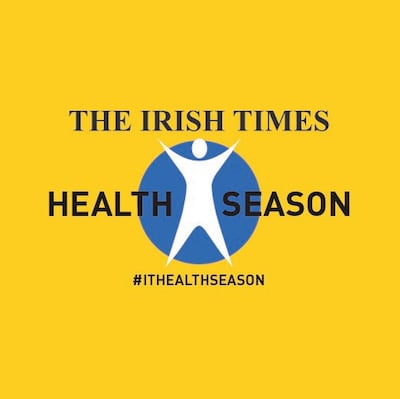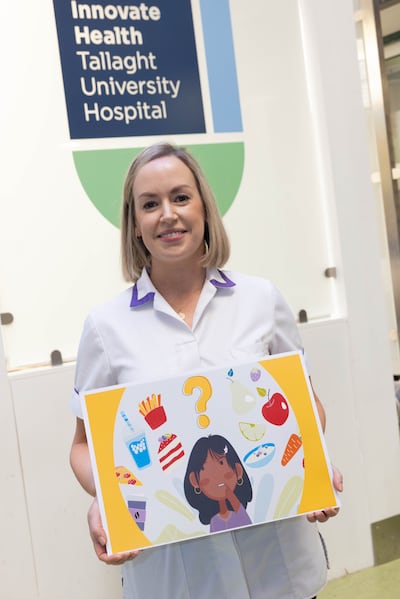Nobody expects to be able to comfortably complete a physically demanding running event without going into training beforehand, whether they are in the “couch to 5k” bracket or preparing for a marathon.

The same mindset for building up fitness is now being encouraged among people awaiting surgery in the evolving health field of “prehabilitation”. The fitter patients are going into theatre, the better their chances of coming through the operation without complications and the better their chances of a faster recovery.
However, the tendency among some patients facing major surgery is to think they should sit and rest and conserve their energy for what lies ahead, suggests Ms Maria Whelan, a consultant general and colorectal surgeon at Tallaght University Hospital. Whereas being proactive about building up your body’s reserves is what’s needed.
Everybody is familiar with the concept of post-operative rehabilitation and when specialist surgical dietitian Siobhán Power made her first presentation to hospital colleagues in Tallaght about ideas for a prehabilitation initiative, “everybody thought she had spelt her titles wrong”, laughs Whelan. It is a particular area of interest for Power. In surveying patients who had undergone major surgery involving the gastro-intestinal tract, the feedback was that they had not felt well prepared and would have liked more information on what they could have done to improve that.
[ Researchers identify eight health measures that ‘can slow ageing by six years’Opens in new window ]
Power, partnered by Whelan and in consultation with a multidisciplinary group of health colleagues and the hospital’s communications team, has driven the creation of a series of animated videos, entitled Stronger for Surgery, that are being launched this week.
They offer simple guidance to patients on four key aspects of preparation for surgery:
- Exercise
- Nutrition
- Anxiety and mental health
- Stopping smoking
It’s about being in the best shape you personally can be, whatever your age and health circumstances.
“Surgery causes tissue destruction and if you do anything like that to a body, the body has to heal that,” Whelan says. The body has to draw on all its resources to repair or grow a new part. “You are using a lot of energy to do that and if you don’t have muscle mass, that is a problem.”

People undergoing emergency surgery don’t have the option of prehabilitation, but for those waiting for elective surgery, it is an aspect of treatment that is under their control. Instead of regarding being on the waiting list as a time spent passively waiting for the call, it should be seized as an opportunity to prepare, she suggests.
“Very few of us are as fit as we should be so everyone is living with some challenge, either to their fitness, their weight or having difficulty due to their smoking,” Whelan says. But patients may be unaware that there are things they can do to improve their health status and that undergoing a surgical process does not give a set result.
Currently, there are in the region of 140,000 people across the Republic on the waiting list for inpatient or day-case surgery. Anybody going for any kind of surgery, says Power, can benefit from some aspect of the Stronger for Surgery series, which will be available to all through Tallaght hospital’s website (tuh.ie), and its YouTube channel. Tallaght’s own patients will see QR codes for the videos included in letters about scheduled surgery.
“The beauty of these videos is that they are accessible at anytime, anywhere, on any electronic device and can be shared with family members and care givers,” says Power, who hopes GPs will start to refer patients to the resource, which was developed with seed funding from the HSE’s innovation programme Spark Ignite.
It is a way of communicating to patients that there is something they are able to do and take control of, “rather than it seeming it’s all happening to them, or being done to do to them”, says Whelan. “We’re not trying to put the onus on the patient but to support them.”
On the food and nutrition side of things, “we very much want to avoid frailty and malnutrition”, says Power. “Believe it or not, they are very common issues.
“Sometime we see patients coming to surgery and I know inherently that they would have benefitted from more tailored advice in the pre-operative space. Protein is probably the key nutrient for people getting ready for surgery because it is the building block for wound healing and to mount an immune response.”
Power has published a research paper looking at the nutritional, frailty and stress scores of 100 patients going in for surgery in Tallaght University Hospital.
“We found that patients who were at nutritional risk developed more complications post-operatively.” Patients who were sarcopenic, ie at risk of low muscle, tended to need convalescence compared to those who had adequate muscle store.
“That is what we are trying to mitigate – the modifiable risk factors,” says Whelan.
There is no structured prehabilitation programme in the hospital and she and Power hope this is the first step towards one. They are looking at the possibility of such a programme being run through community partners because it is not something that needs to happen inside the hospital.

Currently, prehabilitation advice is given on an ad hoc, individual basis. “I might identify someone who I think is at significant risk preoperatively and I will ask Siobhan to see that particular person,” says Whelan. “They would be quite obviously at risk for me to trigger that.
“We do admit some patients because we do know that they need to be built up beforehand and it would actually be dangerous to operate on them in their current state.” As life expectancy increases, greater numbers of people are having surgical procedures at a more advanced age.
“We are operating on people that when I started in medicine 20 years ago we would not have operated on,” says Whelan. “Age is just a number – I never automatically say somebody can’t have something because they are 80 years of age. It is really down to their functional status. If they are using their lawnmower at home and going out and doing their shopping and carrying their shopping back to the house – even if they are 84 years of age – it is a good sign that they will manage an operation, as challenging as that is.”
“That is why through the videos we want to encourage people not to be sedentary,” says Power, “not to be fearful, just because the surgery is happening. We want to continue people to be active right up to the time of surgery.”
St James’s Hospital in Dublin was the first hospital here to introduce a physiotherapy-led, pre-operative programme, which caters specifically for those undergoing cancer surgery. Piloted in 2018 and rolled out in 2019, the programme focuses on those with thoracic, upper gastrointestinal, colorectal, head and neck, gynaecological, breast and urologic cancers. The surgical team refer patients to physiotherapy for an online or in-person assessment and they are then invited to attend, again in-person or remotely, an exercise programme that focuses on both aerobic and strengthening exercises. The programme continues right up to the patient’s date for surgery.
This exercise programme was only available in-person until the Covid pandemic, when it was forced to switch to a fully virtual service. It is run by clinical specialist physiotherapist Sarah Wade, who recently completed a master’s in Ulster University, for which she looked at patient satisfaction and experience with virtual health.
“On foot of her findings, it was decided to run a hybrid programme, continuing to provide the online options for patients who live outside of Dublin,” explains a hospital spokeswoman. The number of patients participating in this exercise-focused prehabilitation has increased every year since its introduction, with 802 people attending in 2023.
Patient feedback has been extremely positive, says the spokeswoman, who shares some of the patient testimonials, including: “I was amazed by the option to do physio before surgery. My God, it’s so good. Really gets you into the mind frame on how to progress your recovery without looking for a pill.”
Clinical nutrition and speech and language therapy are provided to patients who are awaiting head and neck cancer surgery. Cancer patients can also be referred to psycho-oncology services in the hospital before their surgery. St James’s has recently, the spokeswoman says, started to provide a “pre-operative exercise intervention to patients awaiting a stem cell transplant”.
The analogy between preparing for an operation and training for an athletic event is reinforced by a recent international study involving researchers at the University of Limerick (UL) into the effects of simulated high altitude for older patients at risk of health complications related to surgery. Reduced oxygen levels at high altitude are known to stimulate an increase in haemoglobin to the blood to carry more oxygen throughout the body.
Eight sedentary volunteers with an average age of 64 spent two weeks living at the National Altitude Training Centre in UL, where oxygen levels can be tightly controlled in individual rooms. For one week the house contained normal air; the second week oxygen levels were mildly reduced to what would be experienced at 2,438m (8,000ft). The volunteers underwent cardiopulmonary exercise tests before and after each week-long exposure.
The research, published in the Anaesthesia journal last December, found that simulated high altitude stimulated a large increase in haemoglobin in participants but led to no major changes in their aerobic fitness. However, this increase in haemoglobin could be clinically beneficial ahead of surgery. It could be generated by providing small-scale hypoxic canopies to patients to use while sleeping, for the weeks leading up to their surgery.
“It is rather like an exercise pill,” says Prof Phil Jakeman, professor of sport and exercise sciences at UL. The exposure to reduced levels of oxygen triggers a physiological response and this could be a way to give patients, who are unable to exercise, marginal improvements in their body’s ability to defend themselves against the trauma of surgery. The study also demonstrates that “starting from a low base the less ‘fit’ can achieve a significantly greater increase in haemoglobin than would be possible in the elite athlete”.
Meanwhile, at Tallaght hospital, Whelan and Power are keen to raise both public and professional awareness about the potential of prehabilitation. The former says that just as there are rehabilitation specialists in the health service, she has no doubt there will be prehabilitation specialists in the future.
- Sign up for push alerts and have the best news, analysis and comment delivered directly to your phone
- Find The Irish Times on WhatsApp and stay up to date
- Our In The News podcast is now published daily – Find the latest episode here










